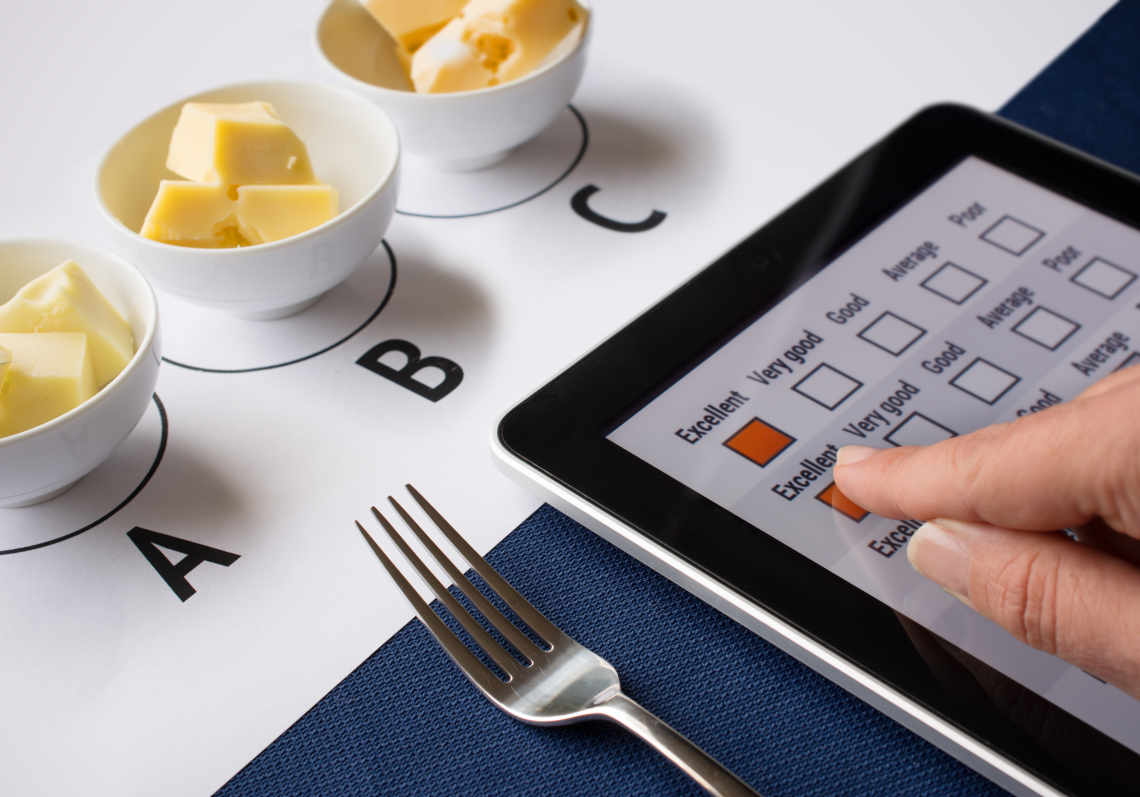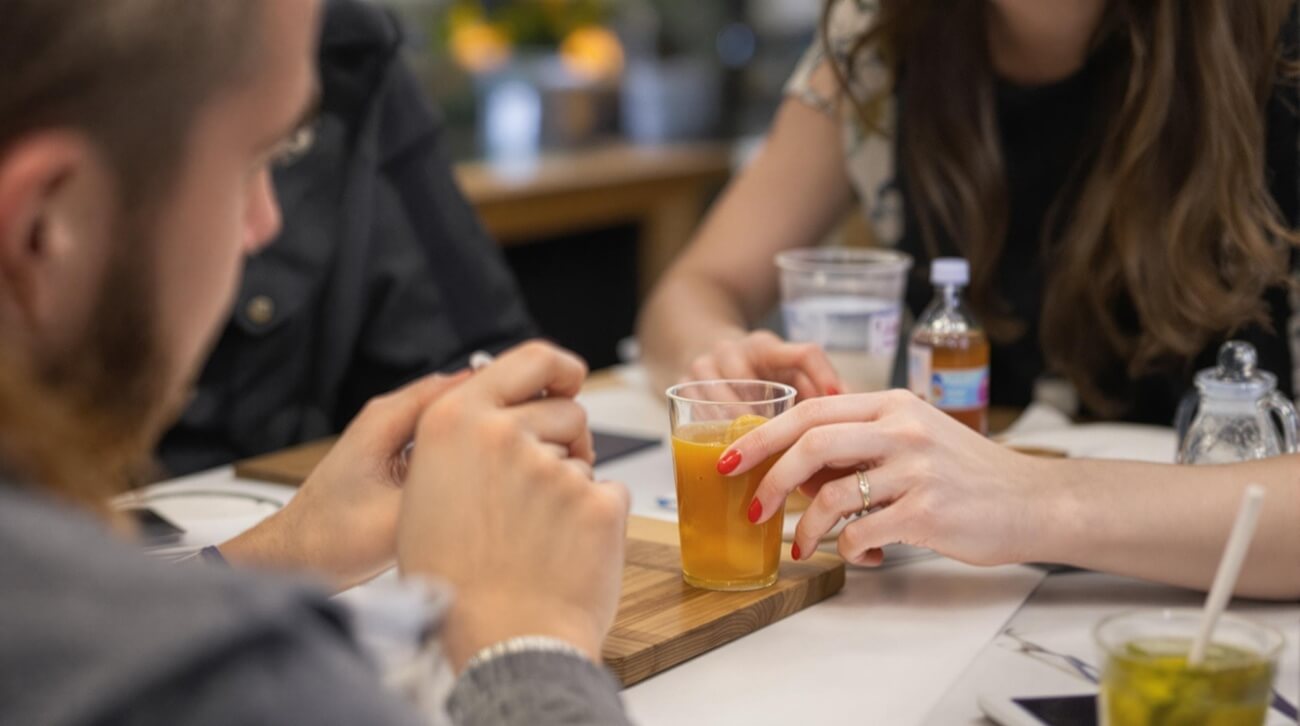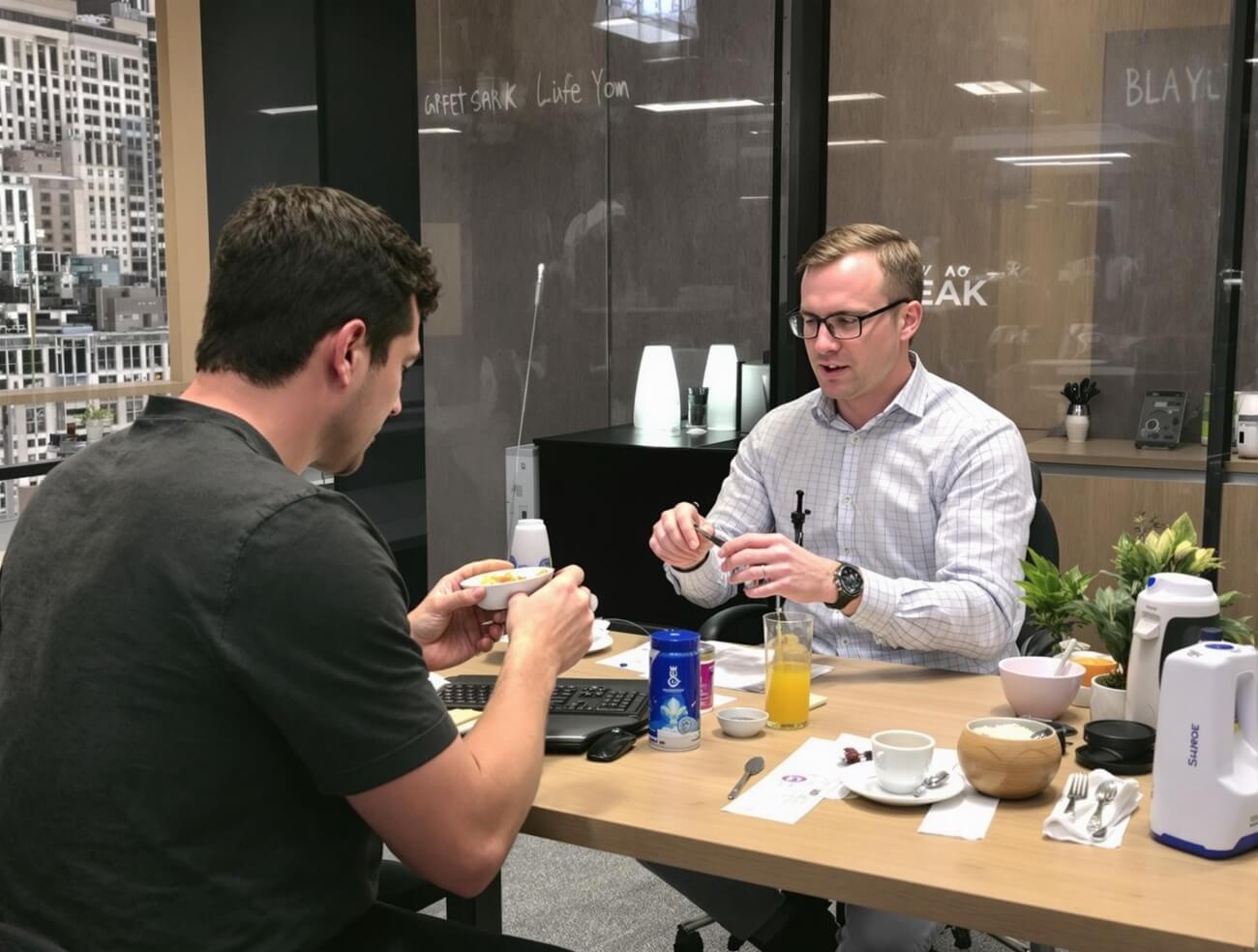Badania rynku testów smaku trójkąta

In the complex world of sensory evaluation… A method stands out for its simplicity and precision: triangle taste testing.
Triangle taste testing market research delves into detecting subtle differences that other methods might overlook – and as businesses continually seek ways to refine their products and meet consumer expectations, understanding the nuances and potential of market research becomes paramount.
What Is Triangle Taste Testing Market Research?
Triangle taste testing market research is a specific sensory evaluation technique utilized primarily within the food and beverage industry, but its applications span various other sectors. In a triangle test, participants are presented with three identical and one different samples. The primary objective is to identify the odd one out. This method is particularly effective in gauging the detectability of differences between products, especially when a product changes in formulation, processing, or packaging.
The strength of triangle taste testing market research lies in its simplicity and objectivity. It eliminates potential biases as participants are unaware of which product is the new version. By analyzing the results, businesses can determine if the change made to a product is perceptible to consumers, thus informing crucial decisions in product development, quality control, and marketing strategies.
Benefits of Triangle Taste Testing Market Research

Market research offers several advantages to businesses aiming to sharpen their product offerings and enhance their market position. Some of the key benefits include:
- Objective Analysis: With triangle taste testing, biases are minimized and participants focus only on the sensory experience, offering genuine feedback devoid of brand influence or preconceived notions.
- Cost-Efficiency: This method often requires fewer participants than other taste tests, making it a more cost-effective option for businesses seeking valuable insights without a hefty price tag.
- Versatility: While primarily used in the food and beverage sector, triangle taste testing market research is versatile. It works in industries like cosmetics and skincare, where subtle differences in product formulations might impact consumer perceptions.
- Quality Control: Regularly employing this method ensures consistent product quality. Any deviations in taste, texture, or other sensory attributes can be promptly identified and addressed.
- Marketing Strategy Refinement: Insights from market research can fuel marketing campaigns. If a change in product formulation is imperceptible, it might not need to be heavily marketed. Conversely, if a new version is noticeably better, it can be a key selling point.
Opportunities in Triangle Taste Testing Market Research
Triangle taste testing market research is rich with opportunities, enabling businesses to stay ahead of the curve and rapidly meet evolving consumer demands. Some of the several opportunities that this unique market research unfolds for businesses are:
- Ulepszony rozwój produktu: Market research offers businesses an avenue to fine-tune their products. Companies can craft products that resonate deeply with their audience by pinpointing the exact sensory attributes consumers prefer.
- Analiza porównawcza konkurencji: This method allows businesses to compare their products directly. Gaining insights into how their offerings stack up against rivals can be invaluable in identifying areas for improvement.
- Indywidualne strategie marketingowe: With insights from market research, brands can design marketing campaigns emphasising product strengths, giving them a competitive edge.
- Expanding Product Lines: Identifying the subtle preferences of different consumer segments can lead to developing varied product lines that cater to niche tastes and preferences.
- Increased Market Share: Companies that regularly conduct market research and act upon its insights are better positioned to capture a larger market share, outpacing competitors.
- Efficient Resource Allocation: By identifying exactly what changes are perceived and preferred, businesses can allocate resources more efficiently, investing in changes that matter most to consumers.
Challenges and Limitations

While market research offers multiple insights to businesses, it’s critical to consider its challenges and limitations before conducting this type of research. Here’s a deep dive into the potential pitfalls and hurdles that businesses may encounter:
- Limited Scope: Triangle taste testing market research primarily identifies small product differences. While this specificity is its strength, it also means that broader, holistic product evaluations may need alternative methods.
- Training and Expertise Required: A high degree of expertise is necessary to conduct these tests effectively and interpret the results accurately. The lack of adequately trained personnel can impact the reliability of the findings.
- Sample Size Challenges: A sufficiently large sample size is crucial for attaining statistically significant results. However, gathering many participants can be time-consuming and costly.
- Product Complexity: If the products being tested have many ingredients or flavors, pinpointing the exact attribute causing a sensory difference becomes challenging.
- Temporal Limitations: Taste fatigue is a genuine concern. If participants are exposed to too many samples in quick succession, their sensory acuity can diminish, affecting the reliability of results.
Future Projections: The Evolving Landscape of Triangle Taste Testing Market Research

The world of triangle taste testing market research is not static – and as technology advances and consumer behaviors shift, triangle taste testing will inevitably transform. Here’s a look at the potential future projections for this market research:
- Integration of Technology: Advanced technologies like Artificial Intelligence can analyze and interpret results more accurately, providing deeper insights from market research.
- Virtual Reality Integration: Virtual reality can simulate different environments, allowing researchers to understand how settings influence taste perceptions without physically altering the testing space.
- Sensory Wearables: With advancements in wearable technology, real-time monitoring of physiological reactions during taste tests could offer more in-depth insights into subconscious consumer reactions.
- Increased Emphasis on Multisensory Experiences: Beyond just taste, the interplay between sight, smell, and sound will play a more prominent role in market research, giving a holistic consumer experience.
- Personalized Nutrition & Health Trends: As consumers become more health-conscious and seek personalized nutrition solutions, triangle taste testing market research will evolve to test products tailored to individual health needs and preferences.
- Advanced Data Visualization Tools: It will be crucial to present the data from triangle taste testing in a more visual and interactive manner. Advanced data visualization tools will make it easier to discern patterns, correlations, and insights from the collected data.
Why SIS International is a Leading Triangle Taste Testing Market Research Company
SIS Międzynarodowy is a trusted name in triangle taste testing, known for delivering precise, actionable insights that empower businesses to refine their products. With over 40 years of experience and advanced methodologies, we help brands understand subtle differences in product formulations to make informed decisions.
Expertise in Triangle Taste Testing
Triangle taste testing is a specialized methodology requiring precision and expertise. SIS excels in this approach, helping brands identify nuanced differences in taste, texture, and aroma between product samples to confidently determine consumer preferences.
Najnowocześniejsze obiekty testowe
Our facilities in New York are equipped with state-of-the-art sensory testing tools and controlled environments. This ensures that every triangle test is conducted with the highest accuracy and consistency, yielding reliable results.
Access to a Diverse Participant Pool
New York’s rich demographic diversity allows SIS to recruit participants from varied age groups, cultural backgrounds, and consumer segments. This ensures your triangle taste testing reflects a broad and representative range of consumer preferences.
Tailored Research Solutions for Every Client
SIS understands that each brand and product is unique. We customize our triangle taste testing to align with your specific goals, whether you’re developing new products, comparing formulations, or validating changes to existing recipes.
Over 40 Years of Market Research Leadership
With a more than four decades legacy, SIS International has been at the forefront of market research. Our experience ensures you receive the most accurate and insightful results, backed by industry-leading expertise.
Affordable Solutions for Maximum Value
SIS delivers high-quality triangle taste testing services at competitive prices. We are committed to providing exceptional value for businesses of all sizes, from startups to global corporations.
Rapid Turnaround Times for Competitive Markets
Speed matters in fast-paced industries, and SIS ensures quick delivery of triangle taste testing results. This enables brands to act swiftly on insights and stay ahead of market trends.
Commitment to Unbiased Research
Triangle taste testing relies on eliminating bias, and SIS maintains the highest standards of objectivity. Our rigorous protocols ensure that results are based purely on consumer perception, free from external influences.
Dedicated Client Support
At SIS, client success is our priority. We work collaboratively with your team, ensuring that every aspect of the research aligns with your goals. From test design to reporting, our dedicated support ensures a seamless experience.
Lokalizacja naszego obiektu w Nowym Jorku
11 E 22nd Street, piętro 2, Nowy Jork, NY 10010 T: +1(212) 505-6805
O firmie SIS International
SIS Międzynarodowy oferuje badania ilościowe, jakościowe i strategiczne. Dostarczamy dane, narzędzia, strategie, raporty i spostrzeżenia do podejmowania decyzji. Prowadzimy również wywiady, ankiety, grupy fokusowe i inne metody i podejścia do badań rynku. Skontaktuj się z nami dla Twojego kolejnego projektu badania rynku.


